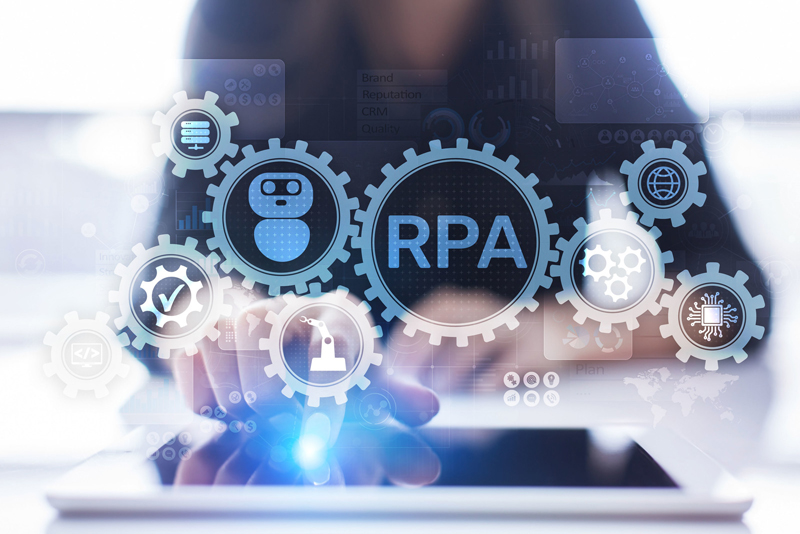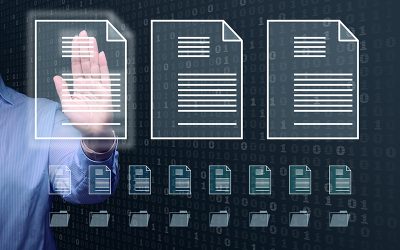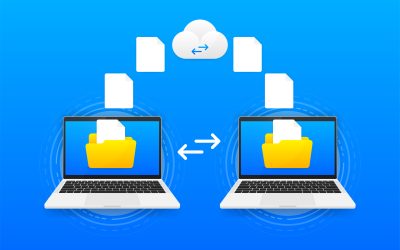The growth in digitization and internet connectivity form the backbone of the Fourth Industrial Revolution. Today, digitization is happening all around the world and data conversion services have an important role to play in this digital transformation. New technologies like artificial intelligence, machine learning etc have also taken over almost all the industries. It provides supervisory functionality and production functionality. Many believe that with the introduction of smart technologies like Artificial Intelligence (AI), Robotic Process Automation (RPA), Machine Learning (ML) etc. data processing services have to come to an end. Although data entry has been interrupted with new technologies, it has transformed to a new level that supports smart technology.
Technological advancements and cultural acceptance of the concept will likely lead to further automation in this present world. Robotic process automation provides you with tools to create your own software robots to automate any business process. The robotics industry has been expanding and this trend is expected to continue into 2020. The International Federation of Robotics predicts that more than 3 million robots will be used in factories worldwide by the end of the year. This significant increase in industrial robotics is not the only growth one can expect. The number of industries making use of robotics is also on the rise.
Here are seven ways how robotics could be used in 2020.
- Cognitive automation: Cognitive automation is where cognitive computing and artificial intelligence comes together. With AI, computers can process huge volumes of data and with cognitive automation uses tools like language processing, data mining and semantic technology, it is easier to analyze large pools of unorganized data. By analyzing these data useful prediction and business decisions can be made. Companies can use the analyses supplied by cognitive automation to re-evaluate and optimize their business practices and make improvements that would boost the growth of the business.
- Warehouse logistics: Inventory management is an essential part of business but mistakes like inadequate training and incorrect data can make data processing difficult. RPA is useful for warehouse logistics to reduce inventory errors and avoid any consequences. Procedural changes that might cause a human worker to make a mistake would not affect a data-driven machine. With RPA, even if an employee forgets or misses to write down something, automated systems would keep track of everything accurately and automatically.
- To perform hazardous work: Robotics is useful when it comes to performing hazardous work. 77 percent of workers in the U.K. say they would prefer that robots perform dangerous tasks instead of people. Robotics manufacturers usually design a robot for performing a single task. But with advanced technology, more durable machines are manufactured that can be used even in hazardous environments. When robots are used to perform dangerous tasks, risk to humans can be minimized and businesses can go on to perform new and innovative tasks.
- To ensure maximum safety: Robotics Automation Process (RPA) is the process of automating repetitive business operations and offers significant potential in improving safety. There may be some human errors but automation eliminates this concern. Human workers can easily get distracted that can lead to mistakes like physical injury or financial injury. But assigning these tasks to robots can ensure safety and it allows people to be free from mistake-prone complex work. With robotics, information security can be assured and RPA bots can keep track of the flow of sensitive data.
- Self-driving cars: Self-driving cars are still in their initial stage and they haven’t taken over the roads yet. But autonomous models are likely to appear in more numbers by this year. Automated vehicles that travel along fixed paths, such as airport monorails, have been in use for some time and have proven to be functional and reliable. Self-driving vehicles may even find use in larger cities for food delivery. Regardless of the specifics, the prevalence of automated cars is likely to grow in 2020.
- Healthcare: The healthcare industry demands faster and precise analysis that robotics can offer. A human touch to doctor’s work is essential and robotics can accomplish these tasks with precision. Various tests have shown that doctors can perform robotic surgery more than 1,000 miles away from their patients and remote operations by way of robotics allow the nation’s top surgeons to operate on distant patients without the need to travel. By 2020, health care is likely to become more automated. Automation also helps to keep track of patient data, patient status and also provide critical healthcare.
- Supplementing retail: The aim of robotics is not to replace human workforce but to complement it. In the retail industry, both robots and humans can work together and in the manufacturing sector, machines handle repetitive tasks while employees can do those tasks that requires nuance. Robotics can be used for functions like cleaning, inventory management or data entry so that employees can give more attention to customers. Machines are often superior in data-driven and monotonous jobs, while people are better in areas that require conversation and hospitality.
For manual data entry processes, RPA helps to improve and streamline the overall methodology because it efficiently integrates into existing business processes. It helps human performance in manual data entry because of its ability to be used for manual, rule-based processes. Automation is widely used in data and various applications are being used to store and compile the information instead of using handwritten documents. Automation ensures efficiency in data processing helps to handle large volumes of data and enables to do repetitive tasks which leads to better productivity. It also helps to track compliance and standards and streamline processes.
For every business, data is valuable and smart technologies and other advanced data analytics have transformed data to make optimum data. Many organizations now seek the help of outsourced solutions for automating business processes. In the world of automation, manual data entry works with data entry services and RPA to provide a complimentary, consistent form of support and coordination to help human operators master their data entry initiatives.




